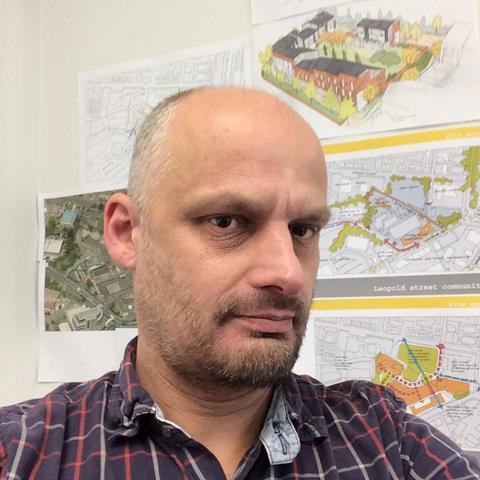Our industry is full of specialists who tend to be siloed in their thinking. A new qualification at the University of Leeds aims to produce graduates with a broader range of skills across architecture, building services and structural engineering, writes course leader Justin Lunn

The world of design and construction has shifted dramatically over the past 30 years and it is widely accepted that our industry suffers serious and significant problems of knowledge sharing, clarity of responsibility and mutual understanding. At best this leads to inefficiency, at worst it can lead to disaster.
The consequences of the most catastrophic recent failure – Grenfell Tower – have produced waves of reform in terms of regulation and working practice recommendations. While these measures are welcome, we may be collectively missing a bigger opportunity for reform because many of the fundamental problems encountered in design and construction are rooted in our education system.
Consistently, reports and recommendations on working practices fail to acknowledge that worsening communication is symptomatic of the increasing proliferation of specialised actors, whether as contractors or consultants, who in the words of the Finnish architect and designer Alvar Aalto, “know more and more about less and less”. I believe that the education process has inadvertently created and promoted a cycle of increasing tribalism and mutual suspicion between an ever growing number of professional roles.
Over decades we have created graduates who know very little about construction processes
Consider: the education of professionals is run by academics rather than practitioners. Fair enough, we need people who are fully committed to the job, not doing it as a part-time interest. But there is a tendency for matters of professional practice to be downplayed in favour of “design”, because design in the abstract does not need current practice experience of design legislation, multi-disciplinary collaboration, technical innovation, or contract administration.
Over-emphasis on design thinking means that graduates have less exposure to practice knowledge and are less able to manage complex building projects. Over decades we have created graduates who know very little about construction processes or the interface of different design disciplines.
What then happens is a process of specialisation into a larger number of roles, expert in a narrow field, but without authority across disciplines. Professional roles today hold the same titles, but have a much reduced breadth from when they began.
>> Also read: The UK’s skills approach remains fractured – we need joined-up thinking
>> Also read: Closing the skills gap: Alison Watson’s mission to transform built environment education
Perhaps it is time that the education of construction industry professionals was fundamentally refocused, so that instead of ever more siloed specialisms, they were taught more as unified aspects of the same process, with specialisation into professional roles only happening in the workplace. ARB’s new model for education provides the opportunity for experiments of this kind, one of which is the Integrated Master of Architecture and Engineering, due to launch at the University of Leeds in 2025, providing masters level accreditation in architecture, building services and structural engineering, including design and construction management.
The aim is to produce graduates who will be able to choose which profession to join while having understanding and experience of all three. The hope is that this model of professional learning will change the culture of construction by equipping individuals to work across professional divides and avoid the tribal rivalries which are currently embedded.
Imagine a world where the leaders of construction processes for large and complex buildings are highly expert individuals, carrying out a multitude of responsibilities across design, procurement of materials and labour, appointment and management of contractors and measurement of materials and completed work. They use new techniques to define and control building information and performance in advance, agreeing aesthetic and technical elements with clients and then preparing and disseminating designs and specifications to suppliers and subcontractors.
This brave new world is a real place, not speculative fiction. It’s just that it is England in the 17th century
Design responsibilities and competences extend across spatial, structural and building physics elements, which together with managerial expertise allows these individuals to have a complete and integrated understanding and control over the project as a whole, balancing sometimes competing visions and agendas with the defined needs of the project.
Sounds good doesn’t it? Yet, this brave new world is a real place, not speculative fiction. It’s just that it is England in the 17th century.
>> Also read: ��Ȧ the future commission: skills and education stream
Over the 350 years since Christopher Wren began building St Paul’s Cathedral, the “master constructor” role has gradually broken apart, with engineering in the 19th century to project management in the 20th. The lack of overall coordination has been lamented for decades with increasing urgency, most recently with the idea to propose a “golden thread” of project information. This is a good idea, but is information alone enough?
To truly remove barriers, what if there was a professional who had authoritative knowledge integrating an entire project, using new management tools including BIM and AI? The new role would reflect this overall mastery of construction.
We could call this role… architect.
Justin Lunn is an associate professor and the architecture programme leader at the University of Leeds























1 Readers' comment